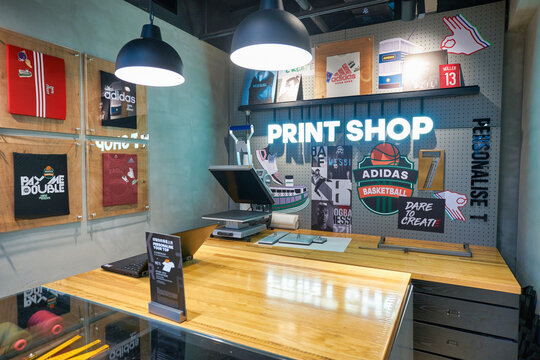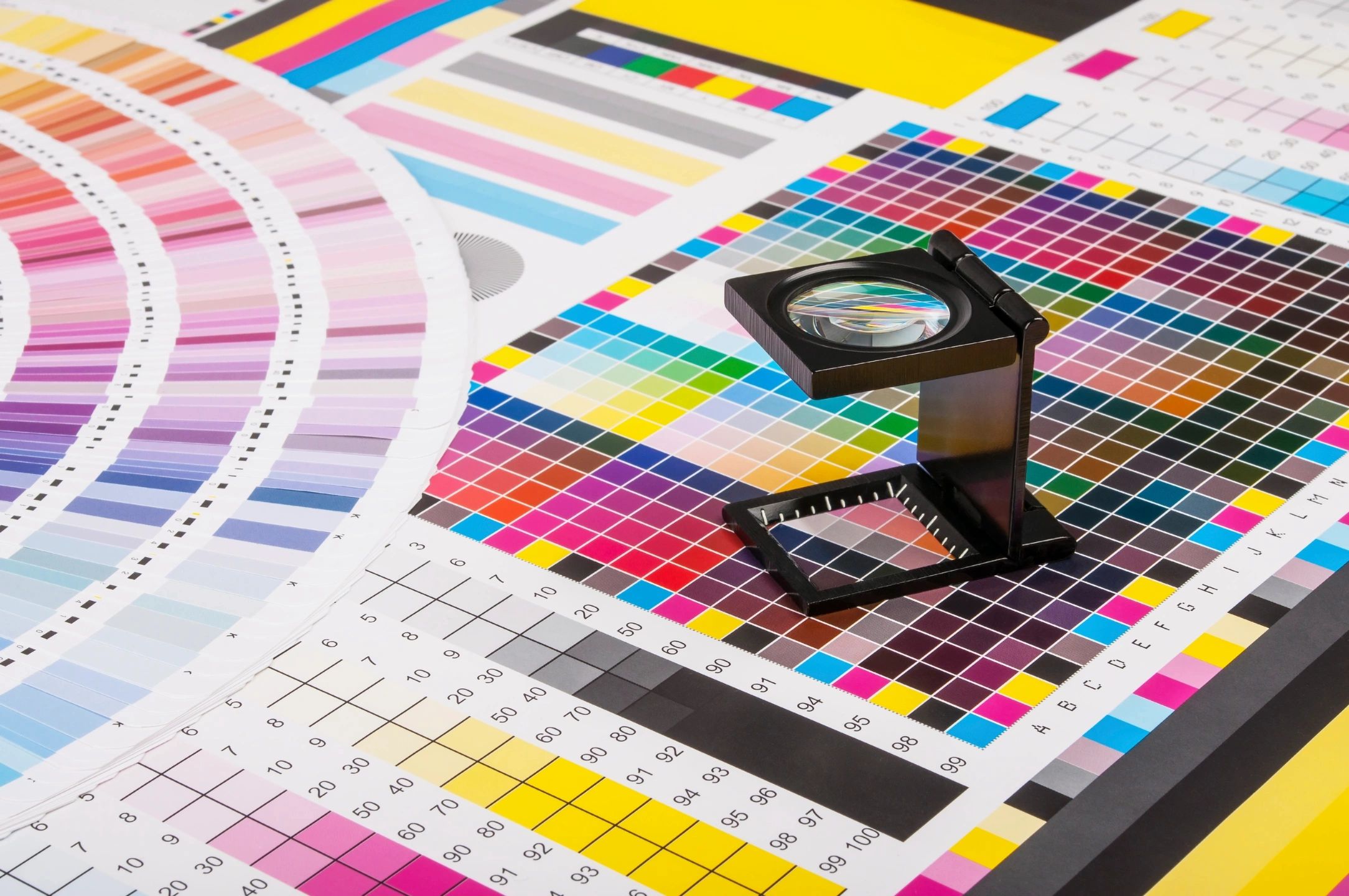The Ultimate Guide to Making Use Of Printing Services for Custom Art Prints
Steering through the world of custom-made art prints requires a clear understanding of numerous printing services. Musicians have to consider aspects such as printing strategies and materials to achieve the preferred outcome. Each decision, from artwork preparation to shade calibration, plays a vital function in the last item. As they discover these components, artists can disclose the potential for their job to get in touch with audiences in a purposeful method. What actions can they require to assure their prints stick out?
Comprehending Different Sorts Of Printing Solutions
Several people may ignore the complexities of printing solutions, comprehending the various kinds offered is vital for anyone looking to develop custom art prints. One of the most typical types consist of digital printing, counter printing, and screen printing. Digital printing is favored for its quick turn-around and ability to produce premium images straight from electronic data, making it excellent for tiny runs. On the other hand, offset printing offers exceptional photo high quality and is cost-effective for larger amounts, utilizing plates to move ink onto paper. Screen printing, typically used for fabrics and advertising products, entails pushing ink with a mesh display, permitting lively colors and appearances. Each approach has its unique benefits and limitations, making it essential for musicians and developers to analyze their specific needs, such as quantity, desired top quality, and budget plan, prior to choosing a printing service that straightens with their imaginative vision.
Selecting the Right Materials for Your Prints
Picking the ideal products is vital for attaining premium personalized art prints. Recognizing the numerous sorts of paper and the value of ink quality can significantly influence the final outcome. Artists have to think about these aspects to ensure their vision is accurately represented in the published piece.
Paper Kind Explained
Selecting the ideal paper kind is essential for accomplishing the desired aesthetic and longevity in customized art prints. Numerous choices exist, each offering distinct features. Glossy paper improves color vibrancy and information, making it excellent for digital photography prints. On the other hand, matte paper provides a softer surface, which is better for art work that calls for nuance and texture. Great art paper, often made from cotton or alpha cellulose, provides historical top quality and appropriates for replicating intricate details in paints (Print Shop Near Me). In addition, specialty papers, such as watercolor or canvas, can add unique visual impacts. Ultimately, picking the proper paper type will substantially affect the last presentation, guaranteeing that the art work is both long-lasting and aesthetically enticing
Ink High Quality Matters
Ink quality plays an important function in the total success of customized art prints. Premium inks ensure vibrant colors, sharp details, and long life, which are essential for showcasing creative job. When choosing printing services, artists ought to think about pigment-based inks over dye-based choices, as they supply better discolor resistance and shade stability. Additionally, the choice of ink need to match the picked paper kind, improving the print's aesthetic effect. Environmental aspects, such as moisture and temperature, can additionally impact ink performance; for that reason, artists should ask about ink formulas that stand up to these aspects. Eventually, spending in remarkable ink quality can raise the last item, ensuring that the art print holds to the artist's vision for many years to find.
Exploring Printing Techniques: Digital vs. Traditional
While both conventional and digital printing techniques have their special benefits, the choice on which approach to make use of typically hinges on the certain needs of the artwork. Digital printing masters adaptability and rate, enabling for quick turn-around times and the capability to publish on demand. This method is particularly useful for artists who call for little runs or special items, as it eliminates the requirement for comprehensive arrangement processes.Conversely, traditional printing methods, such as lithography and screen printing, frequently generate richer textures and colors, interesting musicians looking for an extra responsive and authentic coating. These techniques can boost the depth and quality of the art work, making them suitable for bigger versions. Additionally, standard methods may offer an unique visual that electronic printing occasionally battles to replicate. Ultimately, the selection in between these methods need to consider aspects like wanted high quality, quantity, and artistic intent, directing musicians to the most suitable option for their jobs.

Preparing Your Art Work for Printing
Effectively preparing artwork for printing calls for cautious interest to detail, no matter the picked printing method. Artists must ensure that their data are produced at the suitable resolution, usually 300 DPI, to preserve sharpness and quality. The proper color mode, usually CMYK for print, is vital to accomplish the preferred color accuracy. Musicians need to also think about the measurements of the artwork, making certain to consist of hemorrhage locations if essential, to avoid any type of unwanted white edges after trimming.Additionally, file layouts play an important role; TIFF and PDF are commonly preferred for premium prints. Prior to entry, it is essential to examine the art work for any kind of blemishes or unwanted components. By meticulously examining these elements, musicians can enhance the likelihood of their prints straightening with their imaginative vision, ultimately bring about an effective printing outcome.
The Value of Shade Calibration and Proofing
Shade calibration and proofing are essential action in the printing process, as they assure that the last result precisely shows the musician's vision. Correct shade calibration warranties that the colors displayed on the screen match those that will certainly be published. This procedure involves changing the monitor setups, printer profiles, and inks to accomplish a constant shade representation.Additionally, proofing enables artists to preview their job before the final print run. This stage allows them to find and fix any kind of discrepancies in information, color, or saturation, consequently decreasing pricey errors. By utilizing hard-copy or electronic proofs, musicians can make informed choices concerning adjustments needed for excellent results.Incorporating color calibration and proofing into the printing operations not just boosts the top quality of the final item yet also promotes a reliable partnership in between the printing and the artist solution, assuring satisfaction and fidelity to the initial art work.
Selecting the Perfect Size and Layout for Your Prints

Advertising and marketing and Marketing Your Custom Art Prints
Marketing and marketing custom-made art prints requires a strong brand name identity to stand apart in a competitive market. Efficient on the internet promotion methods and the calculated use social networks platforms can substantially boost presence and interaction. By incorporating these components, artists can produce an engaging presence that brings in possible buyers.
Structure Your Brand Name Identification
Developing a strong brand name identity is vital for artists wanting to successfully market and sell their custom-made art prints. This identity incorporates the musician's unique style, worths, and story, which reverberate with potential purchasers. Musicians ought to create a natural aesthetic visibility across all platforms, including logos, color design, and typography that show their artistic vision. Furthermore, a clear goal statement helps communicate the artist's purpose and enthusiasm. Engaging narration about the ideas behind each item can cultivate psychological links with the target market. Consistency in messaging, whether on social media or product packaging, boosts acknowledgment and count on. By carefully curating their brand identity, artists can distinguish themselves in an open market, drawing in dedicated clients who value their creativity.
Reliable Online Promotion Techniques
What methods can musicians utilize to effectively advertise their custom-made art prints online? Initially, establishing an expert site showcasing the art work is necessary. This website should consist of premium images and detailed summaries to engage possible purchasers. In addition, musicians can make use of e-mail advertising and marketing by building a client checklist to share updates, promos, and new launches. Collaborating with blog writers and influencers in the art neighborhood can expand reach and credibility. useful source Providing limited-time discounts or special pieces can likewise develop seriousness, encouraging acquisitions. Additionally, optimizing content for online search engine through relevant search phrases will improve visibility. Ultimately, keeping a blog site about the artistic procedure can attract art enthusiasts, fostering a much deeper connection with the target market and enhancing the general advertising and marketing approach.
Utilizing Social Media Platforms
Social media site systems serve as powerful tools for artists seeking to market and market their personalized art prints. By leveraging platforms like Instagram, Facebook, and Pinterest, artists can display their job to a substantial audience. Engaging visuals and tactical hashtags can increase visibility, drawing potential buyers to their profiles. Frequently uploading web content, such as behind-the-scenes processes or brand-new styles, aids keep target market rate of interest and promotes a feeling of area. In addition, musicians can utilize targeted marketing to get to particular demographics, boosting the opportunities of sales. Collaborations with influencers or other musicians can better magnify direct exposure. Ultimately, a well-curated social media sites presence not only promotes custom art prints yet additionally constructs a loyal customer base gradually.
Regularly Asked Concerns

Just how Do I Discover Reputable Printing Expert?
To locate dependable printing provider, one should investigate on the internet reviews, seek suggestions from peers, contrast profiles, demand samples, and assess client service responsiveness. This comprehensive approach guarantees educated choices and satisfying results.
What Is the Regular Turnaround Time for Custom-made Prints?
The regular turnaround time for custom prints differs by service provider, but typically ranges from a few days to two weeks. Factors influencing this consist of order dimension, complexity, and the specific printing methods utilized.
Can I Obtain a Reimbursement if I'm Not Satisfied With My Prints?
The inquiry of obtaining a refund for unsuitable prints typically relies on the particular printing service's policies. Numerous firms provide contentment assurances, while others may have strict return problems, emphasizing the value of reviewing terms beforehand.
Exist Any Kind Of Hidden Prices Connected With Printing Providers?
Numerous printing solutions might consist of hidden expenses such as arrangement costs, delivery costs, or surcharges for particular materials. It's crucial for clients to ask regarding all prospective costs before completing their order.
Exactly How Can I Ensure My Prints Are Eco-friendly?
To ensure prints are ecologically friendly, one need to choose eco-friendly inks, recycled paper, and lasting printing methods. Looking into printing services that prioritize sustainability and getting accreditations can better assure very little environmental effect in the printing process. Guiding with the world of customized art prints requires a clear understanding of various printing services. Lots of individuals may neglect the intricacies of printing solutions, understanding the different kinds see it here readily available is vital for any person looking to develop custom art prints. The most typical kinds consist of digital printing, offset printing, and screen printing. Successfully preparing artwork for printing calls for careful focus to information, regardless of the chosen printing method. Prints intended at galleries could require basic dimensions to facilitate framework, whereas distinct layouts might appeal to enthusiasts looking for something distinctive.Lastly, the printing service's capacities should be examined.